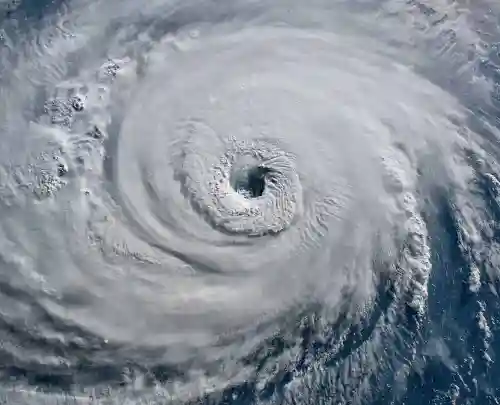Tropical Storm vs Hurricane: What's the Difference?
In the United States, tropical storms and hurricanes are common tropical weather patterns that occur throughout the year, often resulting in severe property damage and potential injury to those living within their path. Although these weather systems impact those living in coastal regions—particularly the Gulf States—more than other areas of the country, those living in interior states can still be affected by a tropical storm or hurricane.
Tropical storms and hurricanes are almost always grouped together because they both fall under the broader type of weather system known as a “tropical cyclone.” Tropical cyclones are low-pressure systems that rotate in a circular pattern and often develop over tropical waters. What differentiates the two and determines whether the tropical cyclone in question is considered a tropical storm or a hurricane is the surface wind speed of the system at the time.
What is a tropical storm?
Tropical storms are tropical cyclones with sustained wind speeds between 39 and 73 miles per hour (mph). Although classified by wind speed, tropical storms also typically include heavy rainfall. The combination of the two can result in severe property damage, including flooding due to heavy rains.
Tropical storms have a lower range of wind speeds than hurricanes, and they can be “upgraded” to hurricane status as wind speeds increase.
What is a hurricane?
Hurricanes are tropical cyclones featuring sustained wind speeds of 74 mph or more. With higher wind speeds, hurricanes are more severe and pose a greater risk to people and properties than tropical storms, although both can cause considerable damage to homes and businesses.
Hurricanes are classified on their own scale called the Saffir-Simpson Hurricane Wind Scale, which rates storms on a scale of 1 to 5 based on maximum sustained wind speed. Within this classification system, Category 1 hurricanes are the least severe and Category hurricanes 5 are the most severe.
If you are projected to be in the path of a hurricane, it is important to note the storm’s classification so you can take the appropriate steps to protect yourself and your property. Keep in mind that a hurricane's category can change as its wind speeds increase or decrease.
On average, six hurricanes hit the United States each year, and three of those tend to be classified as category 3, 4, or 5, which are considered “major hurricanes.” With that being said, even category 1 and 2 hurricanes can result in flooding, tornadoes, and storm surges. Therefore, it is always best to heed evacuation warnings and stay up to date with developing information when a hurricane is inbound.
What about tropical depressions?
Technically, there’s a third classification of tropical cyclones that comes before tropical storms. If a tropical cyclone has wind speeds less than 39 mph, it is classified as a tropical depression. While less severe than a tropical storm or hurricane, tropical depressions can still drop a lot of rain on an area and involve higher-than-usual sustained winds, which means they still have the potential to cause water damage and other weather-related property damage.

What's the difference between a tropical storm and a hurricane?
Here’s a quick recap:
While both tropical storms and hurricanes are tropical cyclones, they differ based on the sustained windspeeds of the weather system.
- Tropical Depressions have a maximum sustained surface wind of 38 mph or less.
- Tropical Storms have a maximum sustained surface wind of 39 to 73 mph.
- Hurricanes have a maximum sustained surface wind of 74 mph or more.
While hurricanes are more severe than both tropical storms and tropical depressions, all three can result in severe damage to your property. If you find yourself dealing with property damage due to a tropical depression, tropical storm, or hurricane, you can count on the disaster restoration experts at BELFOR to repair your property and help you bounce back faster.
Recover from storm and water damage with BELFOR
The cleanup and recovery after a natural disaster such as a tropical storm or hurricane can take a long time, and it’s often difficult to know where to begin. That's why we offer professional storm clean-up and recovery services to help you navigate the loss, address the damage to your property, and get back on your feet as soon as possible.
Our storm damage and wind damage services can include the following:
- Emergency Board-Up Service
- Perimeter Fencing
- Building Shrink Wrap
- Emergency Security Personnel
- Demolition and Reconstruction Services
Additionally, given the propensity for flood damage during a tropical storm or hurricane, our water damage restoration can help you clean floodwater up from your home, mitigate water damage, and prevent mold from growing.
Contact your local BELFOR office or download the app today to get started with the storm restoration services you need to clean up your property and ensure it's safe from further damage.

